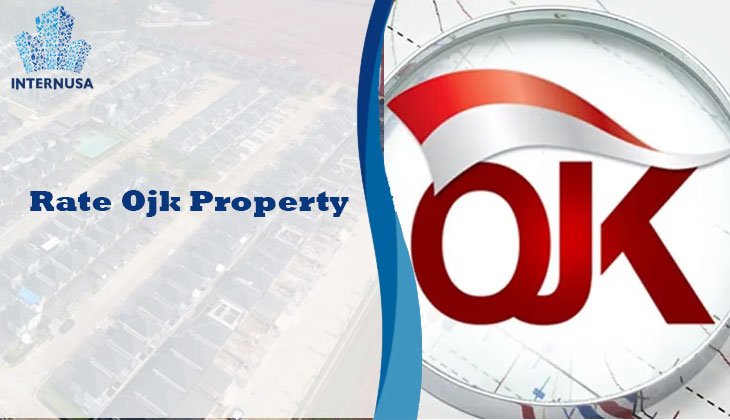OJK’s Role in Property Pricing: Stability or Stagnation?
Indonesia’s real estate market continues to be one of Southeast Asia’s most dynamic sectors. However, investors—both local and foreign—must navigate a range of regulations. One crucial element is the property rate set or influenced by OJK (Otoritas Jasa Keuangan), Indonesia’s Financial Services Authority. Understanding the OJK property rate can help investors make smarter decisions and minimize risks.
In this article, we’ll explore what OJK property rates are, how they work, and their impact on real estate investments.
What Is OJK?
The OJK, or Financial Services Authority of Indonesia, is an independent institution that regulates and supervises financial services in banking, capital markets, and non-bank institutions. One of OJK’s roles is ensuring financial system stability, including managing property financing and lending rates.
Although OJK doesn’t set property prices directly, it oversees mortgage interest rates, financing structures, and credit risk evaluations. These affect how accessible and profitable property investments become.
What Does “OJK Property Rate” Mean?
The term “OJK property rate” generally refers to benchmark interest rates and regulations that influence:
-
Mortgage rates (KPR – Kredit Pemilikan Rumah)
-
Loan-to-value ratios (LTV)
-
Non-performing loan (NPL) thresholds in real estate
-
Risk weightings for property lending in banking
These rates guide how banks structure property loans, and they influence how much interest investors or buyers pay.
Key Components Influenced by OJK
1. Mortgage Interest Rates
OJK monitors the mortgage market and may issue circulars or guidelines related to interest rate ceilings or lending behavior. While Bank Indonesia (BI) sets the BI rate, OJK ensures banks don’t engage in risky or unfair lending practices.
2. Loan-to-Value (LTV) Rules
LTV determines how much you can borrow compared to the property’s value. OJK may tighten or loosen LTV ratios to cool down or stimulate the market. For instance, an LTV of 70% means buyers must pay 30% upfront.
3. Risk-Based Capital for Banks
OJK imposes capital adequacy rules to prevent real estate bubbles. Banks offering property loans must set aside more capital for risky assets. This regulation affects how many property loans banks are willing to offer.
4. Consumer Protection
OJK also protects property buyers from predatory lending and false investment schemes. Developers and agents offering real estate investment products must comply with OJK disclosure requirements.
How Do OJK Property Rates Affect Investors?
Understanding OJK’s influence helps investors anticipate changes in:
-
Mortgage affordability
Lower interest rates make financing property cheaper. -
Property demand
Easier access to credit boosts property demand, raising prices. -
Investment risks
Tighter OJK regulation may signal higher risks in the market. -
Developer financing
When lending rules tighten, developers may delay or cancel projects.
Current Trends in 2025
In 2025, OJK has placed more emphasis on responsible lending and risk management due to global economic uncertainties. Key highlights include:
-
More transparency in property-based investment instruments (e.g., REITs)
-
Adjusted loan-to-value rules to avoid overheating in the residential market
-
Continued collaboration with Bank Indonesia to align interest rate strategies
OJK also actively monitors fintech property lending platforms to prevent fraud or unregulated crowdfunding for real estate.
Why Should Foreign Investors Care?
Foreign property investors interested in Indonesia must understand that mortgage facilities are often limited to residents, and financing options can differ greatly. However, OJK’s regulations still impact developer funding, property-backed securities, and commercial property yields.
For example, if OJK tightens bank lending, developers might shift to private equity or joint ventures, altering the market structure and entry points for foreign investors.
Practical Tips for Navigating OJK-Related Property Rules
-
Follow OJK Press Releases
Visit ojk.go.id for updates on property-related policies. -
Work With Licensed Brokers
Make sure your agents and financial consultants are OJK-certified or work under regulated entities. -
Understand Financing Regulations
Know what LTV you can qualify for, and how mortgage rates may shift. -
Monitor Economic Indicators
Watch the BI Rate, GDP growth, and inflation—all factors that influence OJK decisions.
OJK vs Bank Indonesia: What’s the Difference?
It’s common to confuse OJK and Bank Indonesia (BI). Here’s a quick comparison:
| Aspect | OJK | Bank Indonesia |
|---|---|---|
| Main Role | Financial services supervision | Monetary policy & interest rate setting |
| Property Role | Regulates banks’ real estate risk exposure | Sets BI Rate affecting mortgage rates |
| Tools | LTV ratios, capital adequacy rules | Benchmark interest rates |
Both institutions influence property indirectly but through different mechanisms.
OJK and the Future of Property Investment
OJK property rates may not be as directly visible as interest rate announcements from Bank Indonesia, but they play a crucial role in shaping the real estate ecosystem. For investors, developers, and homebuyers alike, staying informed about OJK’s stance on lending, risk management, and regulation is essential.
By understanding the dynamics of OJK property rates, investors can navigate the Indonesian property market with more confidence, anticipate changes, and align their strategies accordingly.






